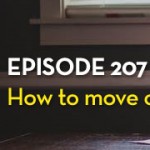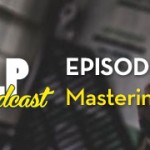Anxiety
We have been here before and I expect that we will come back here again. Anxiety is the number one issue of emotional disturbance in western society. Last time I looked at the research over 60% of patients visiting their general practitioner were said to be suffering from anxiety but were presenting with other symptoms. The level of anxiety and depression medication prescribed by doctors has never been higher.
This can be a problem for people who do not have anxiety but do have a real illness as doctors learn to focus on anxiety. Patients without anxiety can easily be treated by the doctor as though they do have anxiety and their real illness can then be missed, hopefully to be diagnosed accurately later.
These issues of western anxiety are all very strange because the pre industrial societies of China, Asia and Africa, those that remain agricultural and do not become urbanised, have very low levels of mental and emotional disturbance and both depression and anxiety are hardly heard of. I am not saying that these societies are perfect, they are not, but it is easy to see that westernisation and industrialisation bring a shed load of problems from stress and anxiety through to obesity and diabetes etc, and a steady rise in the rates of various cancers.
I know from my own consulting room that anxiety is nearly always present. It may not be the main reason that the person has sought help though it nearly always play a part in the development or the maintenance of their problems. Solving their anxiety issues and symptoms is invariably a large part of the healing process.
Clinical Anxiety
Some anxiety will be clinical. That means the chemistry in the brain is out of balance. It could be that there is an over production of adrenaline and cortisol or of stress hormones generally, that leaves the muscles and sinews twitchy, tense and shaking followed by a heaviness of the legs and arms. When the muscles are tense they produce lactic acid and because of the tension in the muscles the acid does not drain. People with anxiety often feel like they have run a marathon, feel fatigued and tired all the time. This is because the tense activity in the muscles burns calories like crazy and depletes their energy. People with anxiety often report sore aching muscles and joints, particularly around the shoulders and neck and around the small of their back. This extra activity in the muscles and the calories that it takes also explains why people with anxiety are often slim. I am not suggesting that anxiety is a good way to lose weight!
Reactive Anxiety
Following an incident, perhaps an accident or a trauma, loss or bereavement, the fight and flight mechanism will have activated. This gives us heightened awareness and alertness to keep us safe. In reality once this mechanism turns on we either fight back at the threat, run away or flee, or sometimes we can simply freeze like a rabbit stuck in the headlights. Most anxiety introduced traumas are resolved by the mind/brain within about four weeks. When effects and symptoms of the trauma continue beyond this, that is heightened emotion and alertness, disturbed sleep and eating cycle and some flashbacks to the original event, we call this post traumatic stress disorder, PTSD the treatment then steps up a gear using either psychotherapy, medication or both.
Generalised Anxiety Disorder GAD
GAD is when the entire world and all experience can become anxiety provoking. The original cause of the anxiety may never be clear or understood. Those suffering all forms of anxiety may become reclusive and develop agoraphobia, claustrophobia and so on. The definitions of anxiety disorders have become quite precise so that we now talk about social anxiety, performance anxiety, and so on. Following on from that are the endless list of anxiety induced phobias from the more obvious such as flying to some more unusual things like the fear of oranges.
Amygdala Responses
The Amygdala in the limbic system of the brain holds groups or templates of cells that are the basis of our instinctual and emotional responses. Most templates are learned trough observation, so that classically if I watch my mother being phobic about spiders I develop a template of cells in my amygdala that realises stress hormone as soon as I see spiders and have a spider phobia or spider induced anxiety.
Anxiety Treatment
All treatments for anxiety are aimed at desensitising the templates in the amygdala. For most people this will mean medication. Many of the medications that we describe as anti-depressants also have an anxiety relieving component. Many people will be referred for CBT, cognitive behavioural therapy, which can be very effective depending on the practitioner and their own understanding of anxiety. The treatment of the moment for anxiety currently is Mindfulness.
Learning to live in the moment
Mindful psychology encourages people to learn the skill of living in the present. Mindfulness defines most depression as rumination of past unresolved events and most anxiety as rumination of future events that may never happen. In the present moment there are rarely any problems it is the ruminating ability of our imagination that brings problems into the present.
Learning the skills of mindfulness cannot only reduce anxiety, almost immediately, but it can eliminate anxiety altogether. Many of the attendees at my mindfulness courses say something like, ‘why didn’t anyone teach us this when we were kids at school’. Well, it is an evident truth that those schools that do teach their students mindfulness have less disruption, calmer learning environments, and I suspect, though the research is not yet complete, will be shown to have higher attainment levels.
The good news is, it is never too late. Whatever your issues/problems/challenges you can change your life realistically and meaningfully in as little as ninety days through persistent and consistent mindful practice. However, it does take dedication if you really do want to reprogram the way that you think, feel and act.
The option is either to be mindful or anxious – we do have a choice.
Take care and choose to be happy
Sean x



Trackbacks & Pingbacks
[…] Sean wrote a blog post on this subject. Have a read… […]
Leave a Reply
Want to join the discussion?Feel free to contribute!